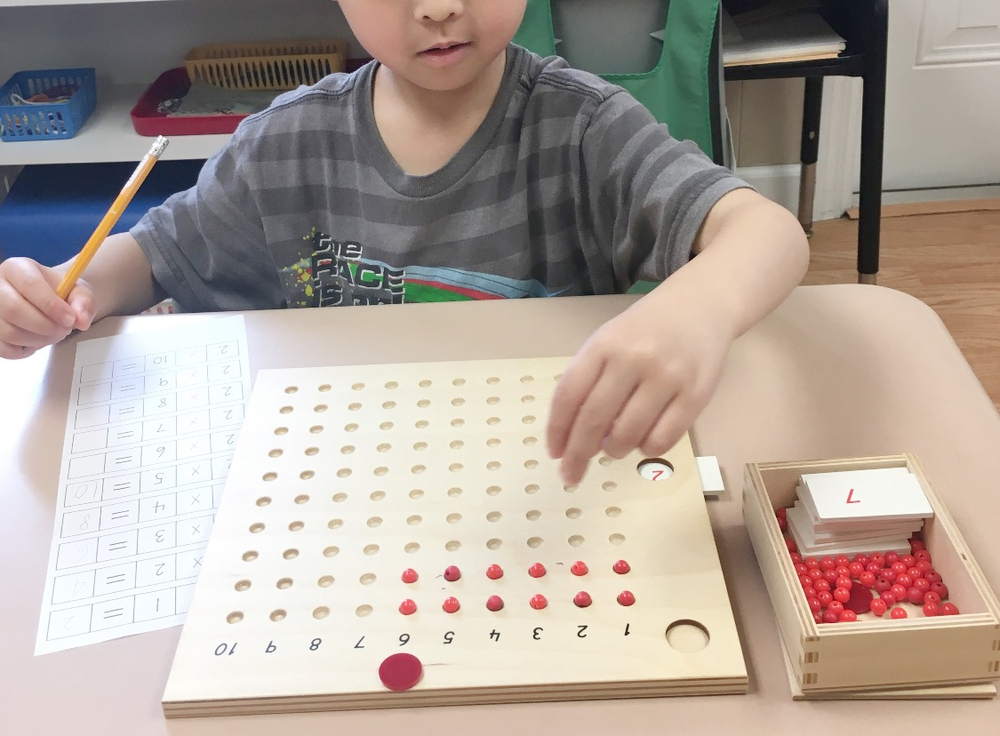
Long after a child has mastered the golden beads, when the sandpaper numbers are far behind her and the Bank Game is old hat, she'll discover the Multiplication Bead Board. The lesson is simple and direct: lay out the quantity of the multiplicand as many times as the multiplier directs you to, then count up the total.
In laying out the factors, however, the child is also introduced to geometric relationships. The rectangle created (and it is always a rectangle) will have the height of the multiplier and the width of the multiplicand. The product is equal to the area. While we may not draw the child's attention to this quality in early childhood, she is experiencing an important geometric concept in a concrete lesson that she can test as often as she likes. In doing so, she internalizes these universal relationships.
Children with more advanced mastery will skip the counting part, or count by sets for each line (9,18, 27 and so on…) They may use the equation cards prepared for them by the teacher or they may write their own, another opportunity for older children to work with each other and challenge each other. And, if they choose, they can record their work when they're done, building their own multiplication tables and supporting their memorization of those math facts for fast recall.
Just like the children themselves, there are fascinating elements to these small simple packages, if you just know how to look.
#Multiplication #Math #ForParents #ForTeachers #Elementary #SecondPlane #FirstPlane #Primary
